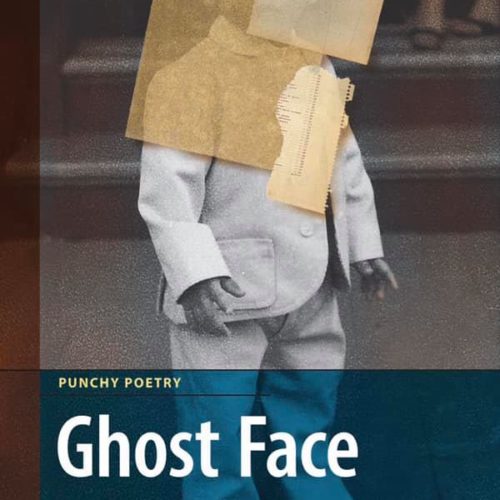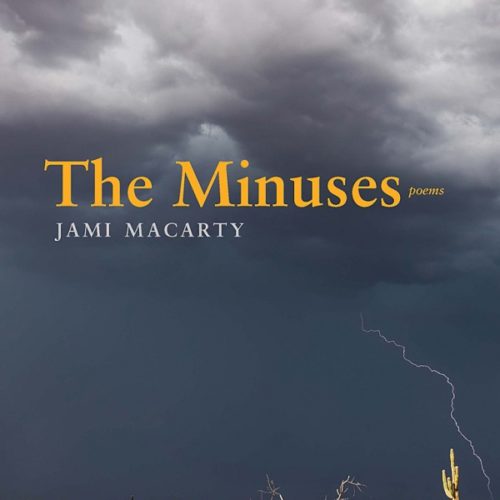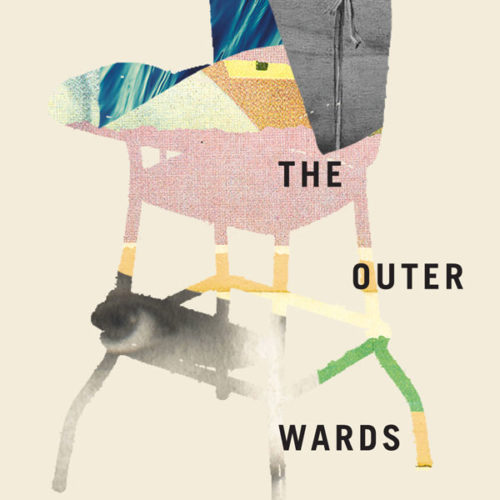

From the Immediate to the Timeless: A Conversation with Maya Clubine
Life Cycle of a Mayfly chronicles more than the life of a river bug. Maya Clubine’s collection, winner of the 2023 Vallum Chapbook Award, takes mayflies as a departure point for thinking about ecosystems, interdependence, and the lessons that we pass down through generations. Clubine considers the growth of a mayfly from nymph to imago alongside changing seasons, bird migrations, a father’s passing, a daughter’s return. Along the way, cycles tangle like a fishing line. In this interview, critic Rosie Long Decter talks with Clubine about structure, repetition, and the relationship between the cosmic and the minute.
This interview has been edited for length and clarity.
Rosie Long Decter (RLD): Can you tell me how this collection came together? When did you realize it was going to be a cohesive work?
Maya Clubine (MC): I’m part of an MFA program based in Houston. It’s entirely online but they do in-person summer residencies. I was attending last summer, in-person in Houston, and I had to write a larger piece for that.
Mayflies had been bouncing around in my head already. I had a few shorter poems already written that eventually merged into this cycle. I brought it to Houston and work-shopped pieces of it. I got some really helpful feedback and found some people who became editors all the way through the process. I basically left Houston and went back to my friend’s farm in Ontario and scrapped the whole manuscript that I had. So it’s gone through maybe three full versions of almost complete rewriting and trying to get all the pieces together.
RLD: What changed between those rewrites?
MC: I went back home. My family lives in a little town built around the Credit River. When I wrote the first draft of this manuscript I was in Montreal, and I think I was writing it as someone who was a little bit homesick. I felt cooped up in the city when I was used to being out in nature, out on the river. Between those two major revisions, I went home and it was fly-fishing season and I got to experience the mayfly hatch again after a few years of not being there for it. So going back to this place I had been writing about and re-experiencing all those old memories gave me a fresh eye on the manuscript. The cycle became more vivid and clear after having been there.
RLD: What intrigued you about the mayfly to begin with? There’s that connection to home, but what about the bug made you so fascinated with it?
MC: I was interested in the mayfly first through fly-fishing. I explain bits of this in the cycle but when you fly-fish, instead of using a real bug you make fake bugs out of different materials. There are traditional ways of doing that which use natural materials and more modern ways of doing it which use synthetic materials. So there’s this whole tradition and history around the mayfly. There’s a deep attentiveness paid to the mayfly, to where it is in its life cycle, and through attending to that you fish better. And it’s a yearlong process. It extends beyond just being out on the river. My family will spend the winter at the table tying those flies so that when you get out on the river you’ve got all the stages of the cycle and then when you show up to the river you gauge where the mayfly is at.
There’s all that history there that inspired the work, but then once I started digging into the actual bug of the mayfly it has its own history apart from fly-fishing. I realized that it was one of the oldest recorded instances of a bug that we have. There’s this whole history of how the bug migrated and moved. It’s just fascinating to me because it’s a prehistoric bug that hasn’t really adapted all that much the way other creatures have into modern times.
What really sparked the cycle and moved this work forward is also the fact that the mayfly in its final form—it lives in three different forms—only lives for a day. In a sense, it’s the oldest living creature that still exists on earth and yet it also has the shortest lifespan. And so, I was interested in the tension between this huge history and then this little flash of a life.
RLD: That’s interesting that you mention that tension, because it feels like the poems operate between these two scales: the enormous cosmic history you’re gesturing to and the very specific and intimate history of the Credit River. So that micro and macro really comes through.
Do you see mayflies differently now?
MC: I do. I think I feel closer to them. The mayfly hatch happened here on the Credit River again maybe a month ago and I was home for it. In my town they literally throw a mayfly party and people gather on the bridges over top of the river and stand in millions of mayflies. Some people find it kind of gross—you’re getting bugs in your hair and your mouth and all over the place. I love it. I think everyone has that tree that reminds them of home or the smell of the ocean or whatever it is, some sort of natural tether, and I think the mayfly has become that for me.
RLD: At what point did you decide to structure the collection around the life cycle and what came out of that choice?
MC: Initially I had a set of maybe six poems and it was just about the speaker. But then the poems grew. It became about the speaker and her father and then her grandfather got mixed up in there. I ended up with these three generations that I was working with and that corresponded in an interesting way to the three stages of the mayfly life: the nymph, the sub-imago and the imago. So I ended up splitting it in this three-by-three pattern and I tried to dedicate a section to each of the different life stages of the mayfly. I also wanted to capture the seasons in there as well. Once I got writing about these different stages I realized how much the view of the mayfly changes from season to season. It all came out of wanting to follow these natural cycles.
RLD: There’s a lot of different cycles and time periods happening concurrently in the collection. The idea of a life cycle suggests a specific progression but it often feels like the past is bleeding into the present, time is suspended. How do you conceptualize time as a dynamic force in this collection?
MC: Like you said earlier, I wanted this to be micro and macro working at the same time. One of my goals in this collection was to speed through time—we see a large chunk of the main character’s life over the course of the cycle—but I also wanted it in this strange way, when time starts overlapping and blurring, to all be of one day. And so it begins with dawn and it ends with dusk. It starts with the sun coming up and ends with the sun going down. You have this huge life span of the existence of mayflies and yet it’s only embodied each in one single instance—I wanted the poem to replicate that.
This is a different topic, but something I was interested in across these poems is the way that we carry things on through generations. So there were many instances of the father mirroring the grandfather and the daughter mirroring the father. They also all merge into one person at one time. I wanted that to feel surreal and I wanted the speaker to wrestle with both the physical moving forward in time and also not being able to escape the past that she carries with her. It’s all working in different ways but I wanted you to be able to exist in the instant that I’ve given you—usually on the river—and be present to it and be attentive to it. But then, as you go through the cycle, also be attentive to the fact that this world around us is just whizzing by. How do we reconcile our places in that: in both the immediate and the cosmic?
RLD: One way you do that mirroring and merging is by using a lot of repetition—phrases and adjectives recur. Are there any other linguistic strategies you used to achieve that effect?
MC: Yeah, I wanted to constantly call back to similar phrases and words. I wanted those words to become strange or be made strange the more you encountered them. Threads are always coming back, for example. Sometimes they’re tethers, sometimes they’re threads hanging things together. Sometimes I paint a bit of a kid’s-cardboard-science-project image where the planets are just hanging by strings. And then other times strings are hanging the rooster in the barn. I wanted to be constantly flipping these images in upon themselves. The image of the thread, for example: it’s simultaneously the tether or the web holding everything together and yet we also see it fraying and we also see it as the agent of destruction. I’ve experienced being in a mayfly hatch and it’s very surreal and I know not everybody has, so I tried to repaint that image in every instance. Sometimes there are mayflies falling, other times it’s snow, pollen, rain—
RLD: —stars—
MC: Absolutely. I wanted these images to translate from the immediate to the timeless, from the macro to the micro. I’m constantly trying to zoom in and out, in and out, to flip these images and phrases and things that are mundane or even boring to us and to make them new over and over again.
RLD: In that way all of these different images become very connected and interwoven and tangled up in each other. You use the word tangled a lot.
MC: I wanted this intertwining. We see geese scattered throughout the narrative and at the end of the poem the speaker finds an empty goose nest and it’s got fishing line and dandelion and down all intertwined in it. So it’s got the lives of the geese and the lives of vegetation and also the garbage that we’ve left behind all tangled in there. I wanted things to be necessarily intertwined. Because nowadays geese do depend on things like fishing line or string to make their nest.
RLD: Did that become disorienting or overwhelming during the writing process? Especially with the separation between father and daughter and grandfather, which I imagine is also a very personal story that you’re telling?
MC: It became incredibly disorienting, to the point where I had this intense system for keeping track of everything. I would write things and I would be like “oh actually, I already wrote that” or I would take something out of the cycle and accidentally forget about it. It’s like listening to a broken record where it becomes the only thing you hear, and you don’t even remember what the rest of the song is supposed to sound like. But I do think that just taught me that I was doing something effective.
To your point about it being a personal narrative, that’s challenging too. I wanted it to be intimate, and I think for anything to be intimate and for anything to be true it’s got to come from real experience. But I also think that in order to tell the truth that I wanted to come across in the cycle, I had to make a lot of things up. There are lots of pieces that are taken straight from my family, there are other pieces that are taken from other people’s families and experiences, and then there are a lot of things that are completely born of the imagination. So that became disorienting too, trying to keep fact and fiction moving together or working together in the same way.
RLD: You’re also a pastel artist. How does that other practice inform your poetry?
MC: My friends will make fun of me when we talk about poetry because they say that my language for talking about poetry is the language of painters. I’ll always use painterly terms like chiaroscuro which is the play of light and dark, or sfumato which is like a haze over things or a blurring of the details.
But I do think this perspective strengthens my work. It strengthens the clarity of images. I see the world from the perspective of a visual artist and in that sense I get hyper-fixated on the details: on the colours and sounds and the way things move. I’m used to moving from the foreground to the background in visual art and I think that was really helpful in this particular cycle, [with] that micro-macro zooming in and zooming out that I was constantly doing. Visual art helps me remember that I’m in an entire scene or world. So if I want to focus on a particular image, I have to remember that that image or object is sitting upon something. Light is hitting it a certain way.
RLD: That puts into perspective what we were talking about with scale earlier, always having to keep those scales in mind. When you’re depicting a life cycle in this way, how do you decide where to end the collection? How did you arrive at that final image of the speaker tugging on the sun?
MC: It was a challenge to decide, especially with respect to the life of the mayfly, where to start and end. That’s part of why I ended up starting at the imago and then ending again at the imago, because I just couldn’t pull off what I wanted to do if I went chronologically from nymph, sub-imago, to imago. In early versions of this, I ran into a lot of issues where nobody knew what a mayfly was. I wrote 16 poems about this pre-historic bug, and everyone was like what are you doing? I had to go back and set up the images in such a way that people would hopefully be interested in the bug and then keep reading. I didn’t want to start with the grotesque river bottom-feeders, which is what these nymphs are. That’s why I ended up [starting at] imago and then I move back to the beginning of the life cycle with the nymph. But I had to end with the imago because I wanted to end with that one fleeting day. That to me is what the cycle is about. I wanted to end with the full image, but the full image dying as her wings are cast into fossils.
This whole thing is constantly looking back to the past, and it’s intensely in the present, but I also wanted a little nod to the future. All of this is going to pass—the father passes away, the mayflies die, the geese fly off for winter—and yet there will be little markings that stay. That’s what I wanted to do with the wings cast in fossils at the end, and then I wanted the curtain to close on the cycle with the sun coming down. I wanted the speaker to be the one to do that. There is a line before the final image that says she’ll be “long gone from this place by then.” In the end, she’s leaving everything behind. But she can’t ever fully leave everything behind. This is her moment of turning her back and leaving the river for the final time. Yet we know that the sun is going to rise again in the morning, and it will all still be there, and in a sense she’s always going to be there too.


